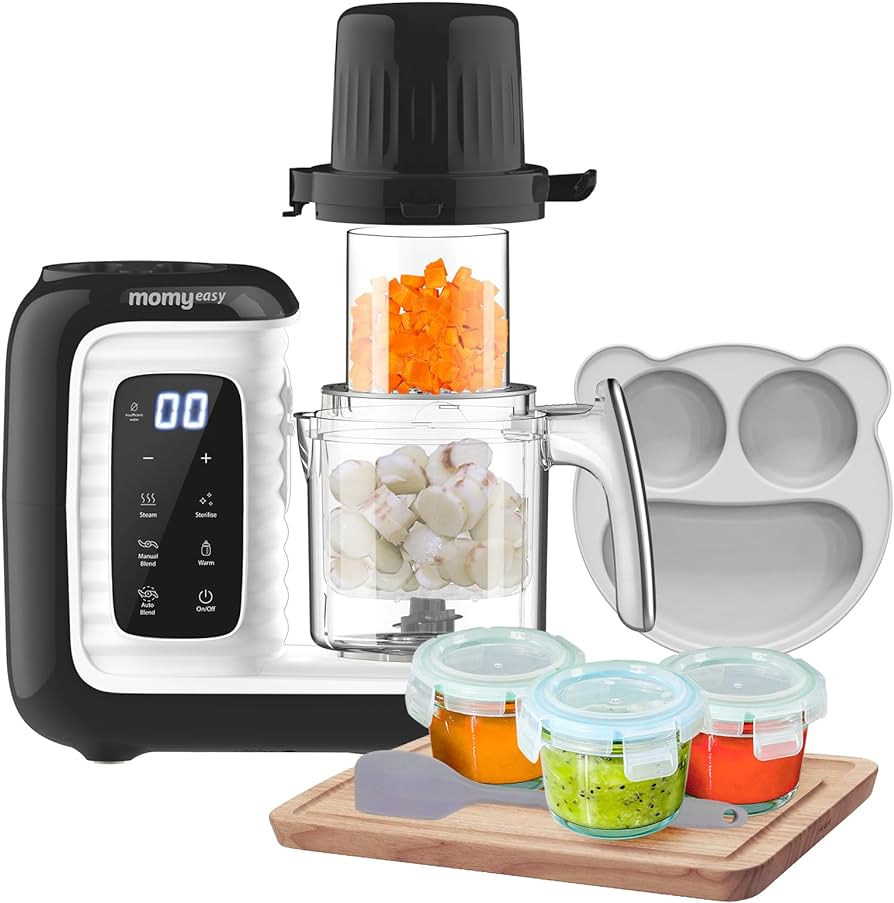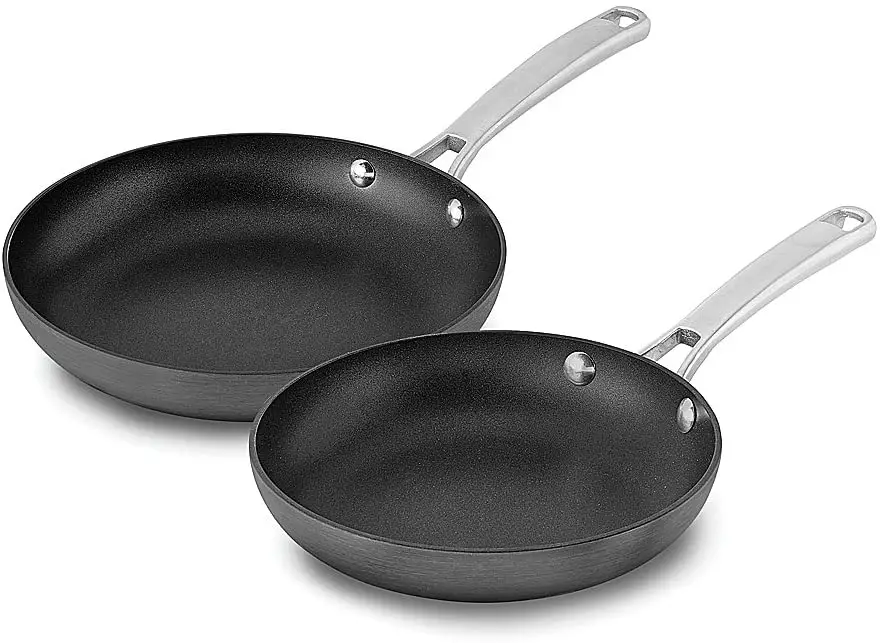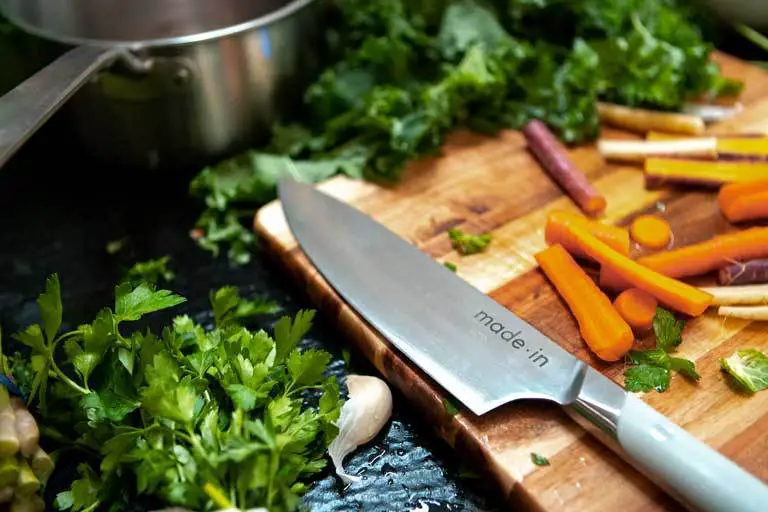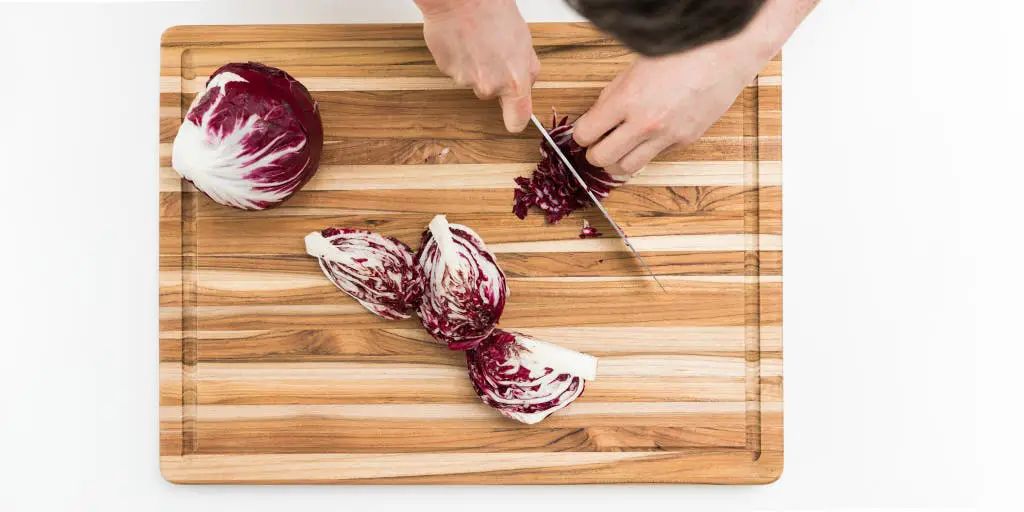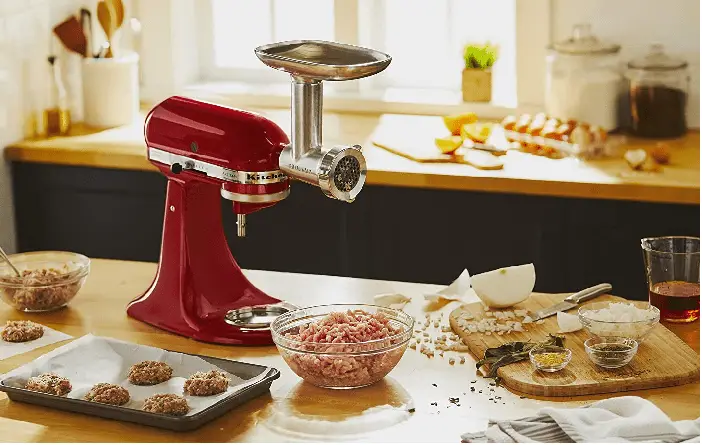In culinary experimentation, the blender emerges as an unexpected hero, capable of transforming cooked meat into a versatile ingredient with just a few pulses. Whether you’re looking to repurpose leftovers, create delectable meat fillings, or craft flavorful sauces, the blender offers a convenient solution. Join us as we delve into grinding cooked meat in a blender, uncovering quick and easy tips to elevate your culinary creations to new heights. From achieving the perfect texture to maximizing flavor retention, let’s unlock the potential of this humble kitchen appliance together.
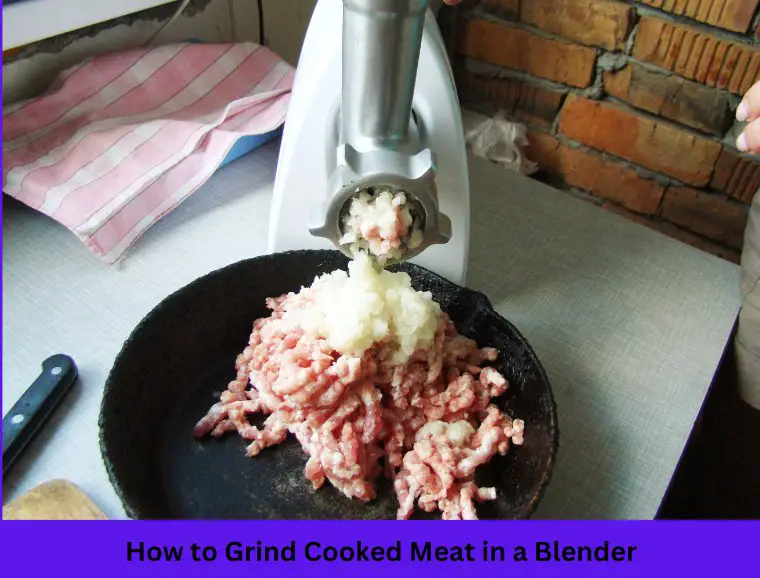
How to Grind Cooked Meat in a Blender Like a Pro
To begin the process of grinding cooked meat in a blender, start by cutting the cooked meat into small cubes. It will make the blending process much smoother and more efficient. Once you have the meat prepared, add the cubes to the blender, being careful not to overload it to ensure effective grinding.
Next, pulse the blender in short bursts to grind even while preventing overheating. A helpful tip is to use a tamper to push down any meat pieces that may get stuck at the top, ensuring uniform grinding and a consistent texture.
The Benefits of Grinding Cooked Meat in a Blender
Grinding meat in a blender offers several advantages, such as controlling the fat content for healthier meals. Additionally, it allows for custom blends of meats, which can enhance the flavour and texture according to personal preferences.
Furthermore, blender-ground beef can be more cost-effective than pre-ground meat from stores, making it a budget-friendly choice. This process is also convenient and time-saving, especially when preparing large batches of ground meat, making it an ideal option for busy individuals or families.
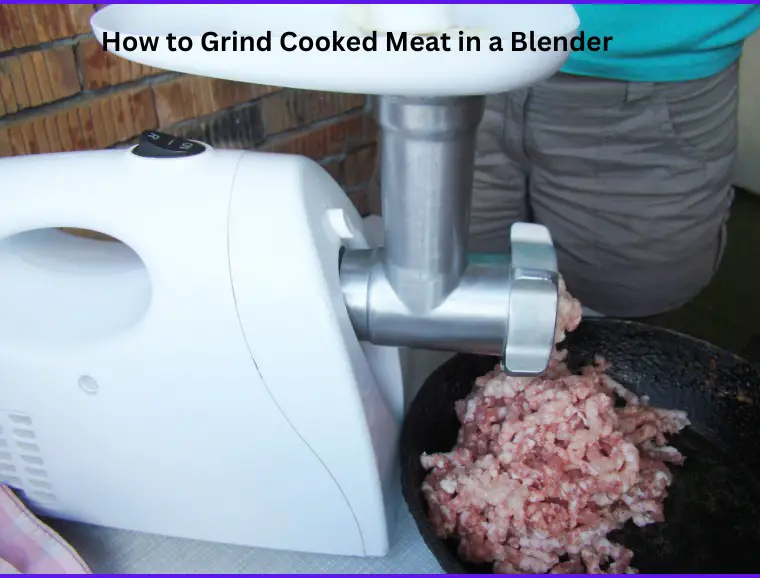
Tips for Choosing the Right Blender for Grinding Meat
When selecting a blender for grinding cooked meat, it’s essential to look for one with a powerful motor and sharp, durable blades designed for grinding tasks. Additionally, blenders with variable speed settings should have better control over the grinding process, allowing for a customized texture.
Opting for models with sturdy construction and large-capacity jars will ensure efficient meat grinding, especially when preparing large batches. Lastly, choosing a blender with easy-to-clean dishwasher-safe components will provide added convenience, making cleaning a breeze after grinding meat.
Alternative Methods for Grinding Cooked Meat Without a Blender
Were you looking for alternatives to grinding cooked meat in a blender? A food processor is a highly effective alternative, offering similar results with its powerful motor and sharp blades. Another option is investing in a manual meat grinder, perfect for a traditional and hands-on approach to grinding meat at home. If you prefer a more hands-on method, using a chef’s knife to mince or chop cooked meat by hand finely is another effective alternative.
Additionally, consider using pre-ground or store-bought ground meats as convenient alternatives, especially when lacking specialized grinding equipment. These alternatives provide flexibility and diverse options for finely ground-cooked meat to suit your preferences and cooking needs.
The Do’s and Don’ts of Grinding Cooked Meat in a Blender
When grinding cooked meat in a blender, it’s crucial to prioritize food safety. Always ensure that the meat is fully cooked and cooled before grinding to prevent any risk of foodborne illnesses. Additionally, remember not to overload the blender with too much meat at once, as this can impact the consistency of the grind.
When grinding cooked meat, pulsing the blender in short bursts is critical to achieving a more even texture without over-processing. Lastly, don’t forget to clean the blender thoroughly after grinding meat to avoid any potential cross-contamination with other foods, ensuring a safe and hygienic cooking process.
Dos of grinding cooked meat in a blender
To achieve optimal results when grinding cooked meat in a blender, it’s essential to use lean cuts to minimize excess fat and achieve a healthier blend. Ensuring uniformity in the size of the cooked meat pieces before adding them to the blender is crucial for a consistent and even grind, resulting in a desirable texture.
Additionally, adding chilled fat such as butter or oil can enhance the texture and flavour, especially if the meat is lean. Prioritizing the chilling of the cooked meat in the fridge for approximately 30 minutes before blending makes it easier to grind, ultimately leading to a smoother and more efficient process.
Do grind cooked meat in a blender
Avoid large chunks or fatty pieces when grinding cooked meat in a blender, as they can lead to an uneven or greasy texture. Additionally, be sure not to leave the cooked meat at room temperature for too long before blending, as this can promote bacterial growth. It’s also crucial to avoid blending for extended periods, as it can result in a mushy texture and affect the meat’s taste.
Furthermore, please do not use a plastic blender jar when blending hot or warm cooked beef, as it may warp or release harmful chemicals, impacting the safety of the food. These simple “don’ts” will help ensure a safe and effective meat grinding process.

Essential safety tips for blending cooked meat
When working with blended cooked meat, it’s crucial to prioritize food safety at every step of the process. Start by ensuring that your hands and all utensils are cleaned thoroughly before handling and blending the meat to prevent potential cross-contamination. Using separate cutting boards for raw and cooked meats is essential to minimize the risk of spreading harmful bacteria.
Additionally, promptly refrigerate any leftovers to maintain their quality and safety once you prepare the blended cooked meat. When reheating dishes made with blended cooked meat, ensure you reach an internal temperature of 165°F (74°C) to destroy potentially harmful bacteria and guarantee a safe consumption experience. These practices are vital in maintaining a high food safety standard when working with blended cooked meat.
Step To Steps Guide to Grinding Cooked Meat in a Blender
Cutting it into small, manageable chunks is essential when grinding cooked meat in a blender. Doing so will ensure a smoother blending process and consistent texture in the final result. Carefully placing the cooked meat chunks into the blender without overloading is vital to maintaining proper blending consistency. Pulsing the blender in short bursts achieves an even grind while occasionally pausing to stir and redistribute the meat ensures a uniform texture.
Once you reach the desired consistency, quickly remove the ground-cooked meat from the blender and incorporate it into your favorite recipes for a delicious culinary experience. This simple process offers a versatile and efficient approach to creating finely ground-cooked meat using a blender.
Seasoning and Flavoring Options for Ground Cooked Meat
After grinding cooked meat, you can enhance its flavour by adding classic salt and pepper for a simple yet delicious taste. For a more intense flavour profile, experiment with spices like garlic powder, onion powder, or smoked paprika to elevate the flavour of the ground-cooked meat. If you’re in the mood for ethnic flavours, mix in cumin, chilli powder, or curry seasoning to create a diverse and flavorful seasoned ground-cooked meat for various culinary creations.
To add moisture and richness, consider adding a Worcestershire sauce or soy sauce splash while seasoning your ground-cooked meat. This will add depth to the overall flavour profile. These seasoning options offer versatility and an opportunity to cater to different tastes, making ground-cooked meat a versatile ingredient for various dishes.
Expert Tips for Perfectly Grinding Cooked Meat in a Blender
Cut the cooked meat into small, uniform pieces to ensure an even grind in the blender. This step is crucial for achieving a consistent texture in the ground meat. When using the blender, use the pulse function to control the grinding consistency, pausing occasionally to redistribute the beef for an even texture. Before grinding, chilling the cooked meat in the refrigerator is essential to prevent it from becoming mushy.
Additionally, adding a small amount of ice while grinding helps maintain a low temperature and preserves the desired texture of the meat. These simple steps will contribute to a successful and efficient meat-grinding process.
The Importance of Using a High-Quality Blender
Investing in a high-quality blender is essential for efficiently grinding cooked meat. Not only does it ensure a consistent texture, but it also helps to maintain the natural flavors and juices of the meat throughout the grinding process. Additionally, a top-notch blender reduces the risk of overheating, which could compromise the texture and taste of the ground meat.
Ultimately, this investment saves time and effort while yielding superior results with minimal hassle, making it a worthwhile addition to any kitchen.
How to Clean and Maintain Your Blender After Grinding Meat
After using the blender to grind cooked meat, it’s crucial to immediately disassemble the appliance and wash each part thoroughly with soap and water. This step ensures no meat particles remain and helps maintain proper hygiene to prevent bacterial growth. Additionally, regularly checking and replacing blunt blades is essential to uphold optimal performance when grinding cooked meat.
Once cleaned, allowing all parts to air dry thoroughly is important before reassembling the blender for future use, ensuring a hygienic and efficient blending experience.
Conclusion
Grinding cooked meat in a blender offers many benefits, from convenience to versatility. While it’s the ultimate guide to grinding cooked meat in a blender like a pro, it’s important to remember the do’s and don’ts and critical safety tips for a seamless process. Experimenting with seasoning and flavor options further enhances the potential of the ground-cooked meat, allowing for diverse culinary creations.
Expert tips emphasize the importance of using a high-quality blender, and proper cleaning and maintenance ensure a hygienic and efficient blending experience. With this comprehensive guide, achieving finely ground-cooked meat with a blender has always been challenging. Happy grinding!
FAQs
Can You Grind Cooked Meat In A Blender?
Absolutely! A blender can effectively grind cooked meat, creating various textures based on the blending time and speed.
What Blender Setting Is Best For Meat?
Use the pulse setting to achieve optimal control when grinding meat in a blender, ensuring consistency without over-processing.
Is It Safe To Blend Hot Cooked Meat?
Yes, it’s safe, but allow the meat to cool slightly to avoid pressure buildup in the blender which can cause spills or accidents.
How To Clean A Blender After Grinding Meat?
Disassemble the blender, wash with hot, soapy water, and rinse thoroughly. For tough residues, a baking soda paste or vinegar soak can help.
